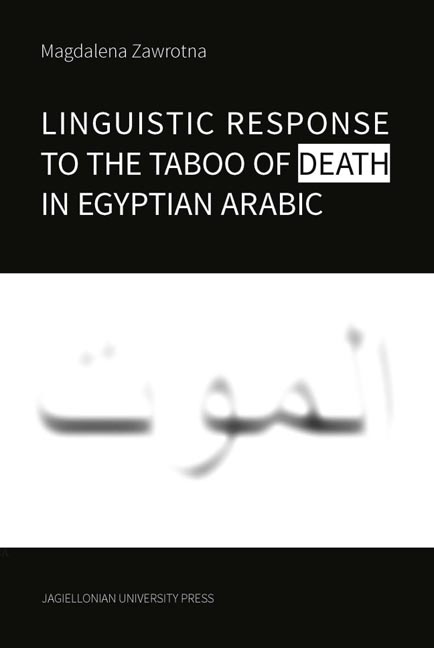Book contents
- Frontmatter
- Contents
- 1 Transcription system
- 2 Introduction
- 3 What is formulaicity?
- 4 Material
- 5 State of research
- 6 Structural notes
- 7 Qualitative analysis of death announcements, comments containing condolences and their responses
- 8 Recapitulation of the analysed material
- 9 Death and the agency of God
- 10 The taboo of death
- 11 Summary
- 12 Questions for further exploration
- Bibliography
- Miscellaneous Endmatter
1 - Transcription system
Published online by Cambridge University Press: 14 October 2023
- Frontmatter
- Contents
- 1 Transcription system
- 2 Introduction
- 3 What is formulaicity?
- 4 Material
- 5 State of research
- 6 Structural notes
- 7 Qualitative analysis of death announcements, comments containing condolences and their responses
- 8 Recapitulation of the analysed material
- 9 Death and the agency of God
- 10 The taboo of death
- 11 Summary
- 12 Questions for further exploration
- Bibliography
- Miscellaneous Endmatter
Summary
In the transcription system, the actual pronunciation is taken into account, therefore, for instance, in ya rabb il-ʿalamīn [ā] is shortened to [a]. Whenever there is doubt in terms of whether Egyptian Arabic (EA) or Modern Standard Arabic (MSA)/Classical Arabic (CA) pronunciation should be applied, the transcription followed a native speaker suggestion (see Methods). Most of the examples, however, represent a mixed variety.
• In dialectal material, whenever the environment of a sound calls for it, short vowels are dropped, e.g., ya bni, long vowels are shortened, e.g., fakra, mugamalāt, ḥagg, šabb and helping vowels are added.
• In line with the above, vocative ya is spelled with the short a, whereas in standard examples it is spelled conventionally as yā.
• Verbs with object pronouns, e.g., yikallimhum, nouns with possessive pronouns, e.g., kitābu and all word combinations in which one word is attached to another as a clitic are written together.
• The use of hyphen is highly limited, it appears mostly in the article al-/il-.
• The initial hamza is dropped when it is in a middle of a breath group and elsewhere with only a few exceptions, e.g., in which [ʾ] is the result of the reduction of [q].
• The process of emphasis spreading, e.g., the occurrence of backed allophones of [a] and [ā] is not noted.
• Ē in dialectal examples corresponds to the standard diphthong [ay], e.g., ʿalēh.
• Both h and ḥ may be used to note the future tense particle, depending on the original notation.
• In original examples the Latin spelling (if available) suggest both yi- and y- in verbal forms, therefore, in some cases short vowels were dropped, e.g., tkūn.
• In aḷḷāh the final h is retained in consistency with ēh, lēh, etc., although, in most cases, it is silent.
• The negative particle (la, lā, laʾ) is, for more consistency, spelled always as lā.
• Individual pronunciation of EA users might differ, therefore, when in doubt, the spelling was
provided by a native speaker.
• In EA examples, the punctuation is limited to comas, question and exclamation marks, occasionally a colon might occur.
• In direct citations the original spelling was retained, e.g. “sheex” (Parkinson 1985: 136).
• No capitals are used in the transcription.
• MSA/CA notation is consistent with ISO transcription. In English fragments the conventional notation is employed.
- Type
- Chapter
- Information
- Publisher: Jagiellonian University PressPrint publication year: 2021



